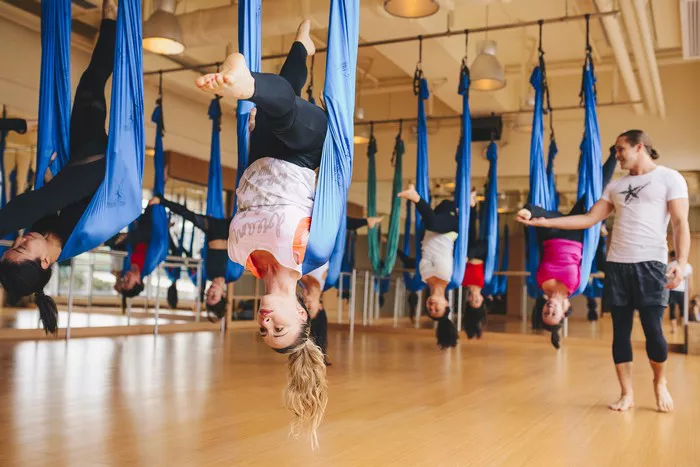Kriya Yoga is a profound and transformative discipline within the larger system of yoga. Rooted in ancient teachings, it has attracted significant attention in modern times due to its emphasis on personal spiritual development, self-realization, and enhanced mindfulness. However, like many ancient traditions, the origins of Kriya Yoga are complex, shrouded in mystery, and often debated. Despite its deep historical roots, one cannot speak of Kriya Yoga’s founder in the conventional sense of a single individual who solely established the practice. Instead, Kriya Yoga, like many spiritual traditions, evolved through the contributions of many enlightened masters over centuries.
In this article, we will explore the origins, foundational teachings, and significant figures in the development of Kriya Yoga, shedding light on its history and offering insights into its modern-day practice.
The Origins of Kriya Yoga
Before diving into who is considered the “founder” of Kriya Yoga, it is crucial to understand what Kriya Yoga is and where it comes from. Kriya Yoga is a comprehensive system of meditation techniques, which includes specific methods of breathing (pranayama), concentration, and self-discipline, all designed to accelerate spiritual growth. It is a path to self-realization that seeks to unite the individual soul (Atman) with the universal consciousness (Brahman) through a series of precise techniques that purify and elevate the body, mind, and spirit.
The word “Kriya” comes from the Sanskrit root “Kri,” meaning action or deed, and “Yoga,” meaning union or connection. Therefore, Kriya Yoga can be understood as the yoga of action or the yoga of transformation through deliberate and conscious effort. The techniques of Kriya Yoga help practitioners still the mind, purify the body, and establish a deep connection with their inner selves, ultimately leading to spiritual awakening.
The earliest references to Kriya Yoga can be found in the ancient scriptures of India, particularly in the Yoga Sutras of Patanjali, written around the 2nd century BCE. In these scriptures, Patanjali outlines the classical system of yoga known as the “Eight Limbs of Yoga” (Ashtanga Yoga). Although Patanjali’s sutras do not explicitly mention the term “Kriya Yoga,” they refer to practices that closely resemble the techniques used in Kriya Yoga today. These include breath control, meditation, and self-discipline, which form the core of the Kriya Yoga system.
However, Kriya Yoga in its modern form owes much to the teachings of a few key spiritual figures, most notably Lahiri Mahasaya, Sri Yukteswar Giri, Paramahansa Yogananda, and their respective lineages.
The Key Figures in the Development of Kriya Yoga
While Kriya Yoga can trace its roots to ancient times, it was revived and popularized in the modern era by several spiritual leaders who played significant roles in its transmission to the West.
1. Lahiri Mahasaya (1828–1895)
Lahiri Mahasaya is widely regarded as the modern-day “reviver” of Kriya Yoga. Born in 1828 in the town of Varanasi (Benares), India, Lahiri Mahasaya was a humble householder, an accountant by profession, and a devoted family man. Despite his seemingly ordinary life, Lahiri Mahasaya became a great spiritual master and an integral figure in the history of Kriya Yoga.
In 1861, Lahiri Mahasaya had a transformative encounter with his guru, Babaji, a legendary yogi who is believed to have lived for centuries and who is often credited with revitalizing the Kriya Yoga tradition. Babaji initiated Lahiri Mahasaya into the sacred practice of Kriya Yoga, and under Babaji’s guidance, Lahiri Mahasaya deepened his spiritual practices and began sharing the techniques with his disciples.
Lahiri Mahasaya was notable for bringing Kriya Yoga into the lives of ordinary people. Unlike many other yogis of his time, he did not isolate himself in caves or monasteries. Instead, he taught Kriya Yoga to people from all walks of life, emphasizing that anyone could practice it, regardless of their social status or occupation. His teachings inspired countless seekers and initiated a new era for the practice of Kriya Yoga.
2. Sri Yukteswar Giri (1855–1932)
Sri Yukteswar Giri, Lahiri Mahasaya’s disciple, played a pivotal role in the transmission of Kriya Yoga to the next generation of spiritual seekers. Born in 1855 in Serampore, India, Sri Yukteswar was a scholar, yogi, and spiritual teacher who took the teachings of his guru, Lahiri Mahasaya, and systematized them in a more structured and accessible manner. He was particularly known for his deep knowledge of both Western science and Eastern spirituality, which enabled him to bridge the gap between these two fields.
Sri Yukteswar also emphasized the importance of harmonizing different spiritual teachings, which he believed were essentially pointing to the same truth. One of his most significant contributions to the Kriya Yoga tradition was the writing of the book “The Holy Science” (published in 1894). In this book, Sri Yukteswar explained the connection between the teachings of the Bible and the ancient Indian scriptures, revealing the universal nature of spiritual truth.
Sri Yukteswar’s most famous disciple was Paramahansa Yogananda, who went on to spread the teachings of Kriya Yoga to the West and become one of the most influential spiritual teachers of the 20th century.
3. Paramahansa Yogananda (1893–1952)
Paramahansa Yogananda, one of the most well-known and revered figures in modern spiritual history, is perhaps the individual most responsible for introducing Kriya Yoga to the Western world. Born in 1893 in Gorakhpur, India, Yogananda was initiated into the practice of Kriya Yoga by his guru, Sri Yukteswar. After years of intense training, Yogananda set out on a mission to share the teachings of Kriya Yoga with the world.
Yogananda’s most famous work, “Autobiography of a Yogi”, published in 1946, is a spiritual classic and has had a profound impact on spiritual seekers worldwide. In this book, Yogananda describes his life, his spiritual journey, and the remarkable encounters he had with many great masters of India, including Lahiri Mahasaya and Sri Yukteswar. The book also serves as an introduction to the principles and practices of Kriya Yoga, and it continues to inspire millions of readers around the world.
In 1920, Yogananda traveled to the United States, where he founded the Self-Realization Fellowship (SRF) in Los Angeles, California. Through SRF, Yogananda worked tirelessly to disseminate the teachings of Kriya Yoga, and the organization remains a leading spiritual community today, with centers across the globe. His teachings emphasized the universal nature of yoga, the importance of direct experience of the Divine, and the transformative power of meditation.
4. Babaji (Unknown Birth and Death Dates)
The enigmatic figure of Babaji is perhaps the most mystical and revered teacher in the Kriya Yoga lineage. Babaji is said to be an immortal yogi, who has lived for centuries and has remained largely hidden from the public eye. According to the teachings of Yogananda and other Kriya Yoga masters, Babaji is the spiritual figure who revived the practice of Kriya Yoga and passed it down to Lahiri Mahasaya.
While there is little concrete historical information about Babaji, his presence in the Kriya Yoga tradition is undeniable. He is often described as a being of extraordinary spiritual powers who has the ability to transcend time and space. Many of the modern-day teachings of Kriya Yoga trace their origins to Babaji’s guidance, even if the details of his life remain mysterious.
The Legacy of Kriya Yoga
Kriya Yoga, as a system, is not the creation of a single individual but rather a collective legacy of great masters, each contributing to the tradition in their own unique way. From the ancient scriptures to the modern-day teachings of Yogananda, Kriya Yoga has evolved and expanded, adapting to the changing needs of humanity while remaining grounded in timeless spiritual principles.
Today, Kriya Yoga continues to be practiced by people around the world, from all cultures and backgrounds, seeking to cultivate peace, balance, and inner transformation. It is a system of self-realization that transcends religious and cultural boundaries, offering a direct path to experience the divine presence within.
While Lahiri Mahasaya is often regarded as the modern-day “founder” of Kriya Yoga, it is important to understand that his role was to revive and share a practice that had been passed down through an ancient lineage. The teachings of Kriya Yoga are not bound to any one individual but are the result of a continuous stream of enlightened masters who have guided humanity toward higher states of consciousness.
Conclusion
In conclusion, while there is no single founder of Kriya Yoga in the traditional sense, key figures such as Lahiri Mahasaya, Sri Yukteswar, and Paramahansa Yogananda have played crucial roles in the revitalization and dissemination of this powerful spiritual system. Through their teachings, Kriya Yoga has reached millions of individuals, offering a practical and profound way to attain self-realization, inner peace, and spiritual awakening.
The legacy of Kriya Yoga, with its emphasis on meditation, breath control, and self-discipline, continues to flourish today, inviting seekers from all walks of life to explore the depths of their own consciousness and to realize their highest potential. Whether you are new to yoga or a seasoned practitioner, the path of Kriya Yoga offers an inspiring and transformative journey into the heart of the self.
Related Topics:















